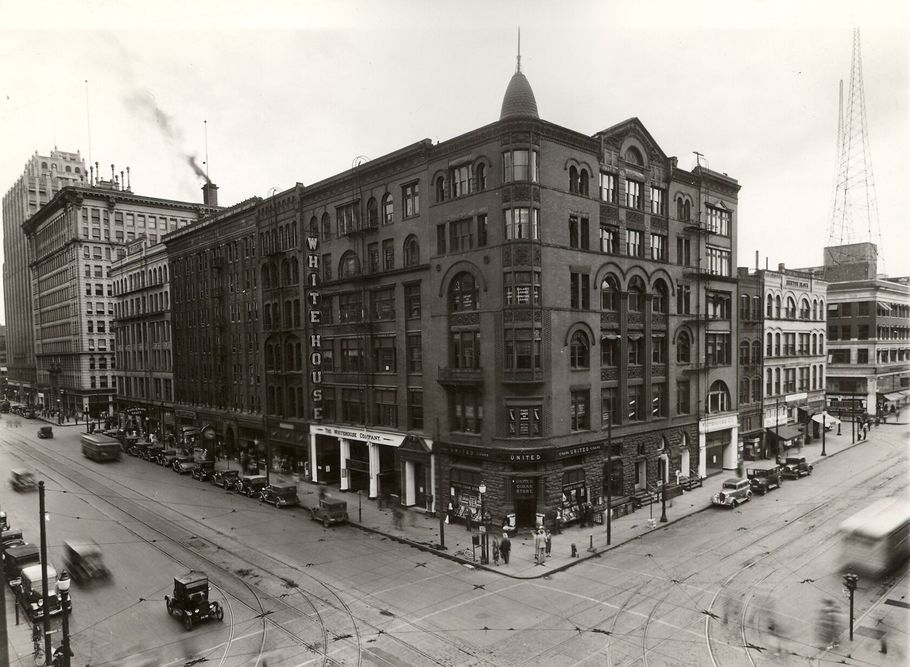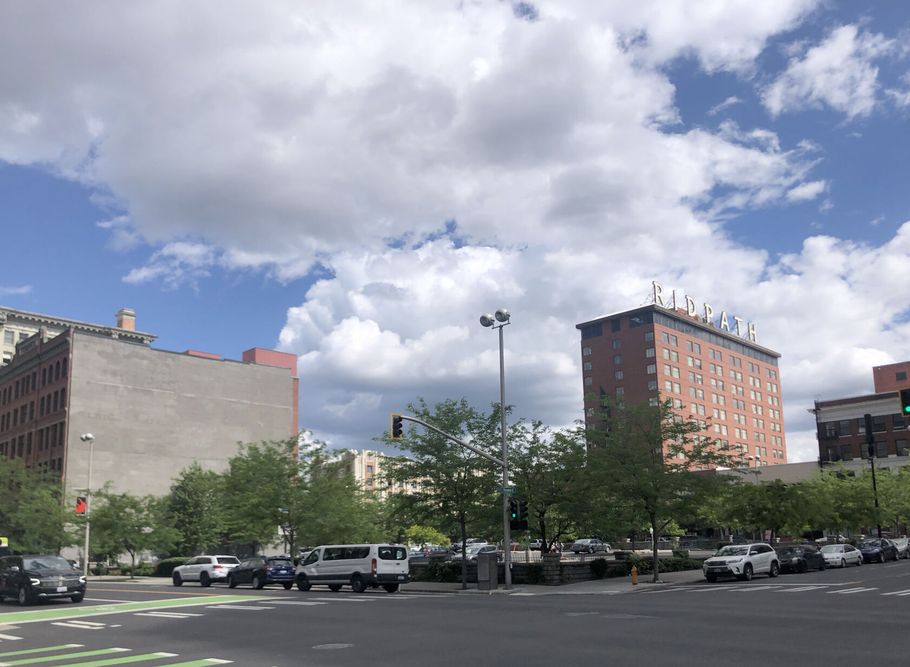
Then and Now: Rookery Building
The massive 1889 fire destroyed more than 30 blocks of the downtown area, including the southeast corner of Howard Street and Riverside Avenue. After the fire, on that corner rose the Rookery, a block of four connected buildings that housed banks, lawyers, dry goods and many other business activities in the heart of the city.
Section:Then & Now


Then and Now: Rookery Building
Francis Cook, publisher of the Tacoma Herald newspaper, was lured to Spokane in 1879 by the offer of free land from James N. Glover. Cook was offered the corner of Riverside Avenue and Howard Street if he opened a newspaper to serve the growing town. Cook began publishing The Spokancq Times in a two-story wood-frame building.
The massive 1889 fire destroyed more than 30 blocks of the downtown area, including the southeast corner of Howard Street and Riverside Avenue.
After the fire, on that corner rose the Rookery, a block of four connected buildings that housed banks, lawyers, dry goods and many other business activities in the heart of the city.
On the corner was Spokane National Bank, six stories with a round corner tower. In the turbulent bank failures of the 1890s, the bank operations were suspended in December 1890, shortly after the building opened. Washington National Bank opened thereir in 1893, a year of national financial upheaval, and only lasted a year in this location.
Wrapped inside the bank tower was the Whitehouse Building that fronted both Riverside and Howard. The Whitehouse Co., an early dry goods store, advertised their “big store” had frontage on Riverside Avenue, Howard Street and Sprague Avenue, though the Sprague access may have just been an entrance and exit hallway through another building.
The design of the corner complex is attributed to Cutter and Poetz, an early partnership of architect Kirtland Cutter.
The partners in the buildings are listed as H.M. Hoyt, H.W. Augustine and D.T. Ham.
East of the Whitehouse was the Riverside Building, and south of the Whitehouse on Howard was the Harrington Building.
Building historian Robert Hyslop remembers the grouping of buildings had a system of light wells and adjoining corridors that left odd and irregular rooms in places and made the name Rookery, the term for a treetop colony of birds, an appropriate moniker.
Hyslop, in his 1983 book "Spokane's Building Blocks," remembers dimly lit hallways: “The whole place had a musty, dusty smell.”
After more than 40 years of use, the block was demolished in 1933 and replaced with a three-story art deco structure called the “New Rookery," which was torn down in 2006.